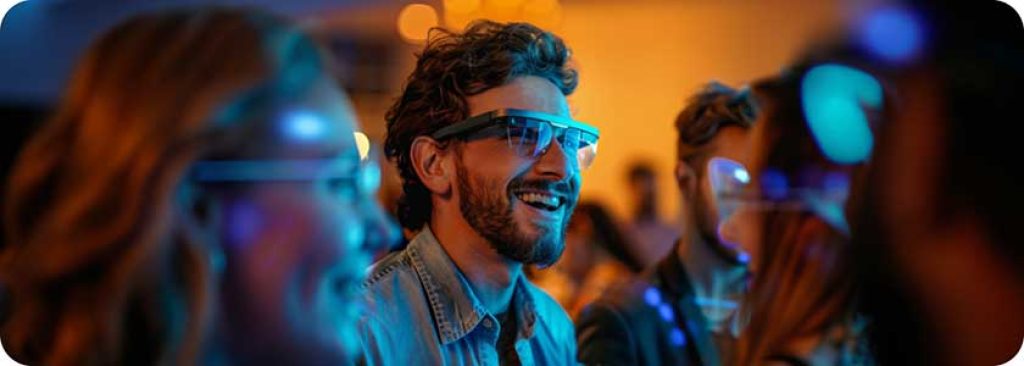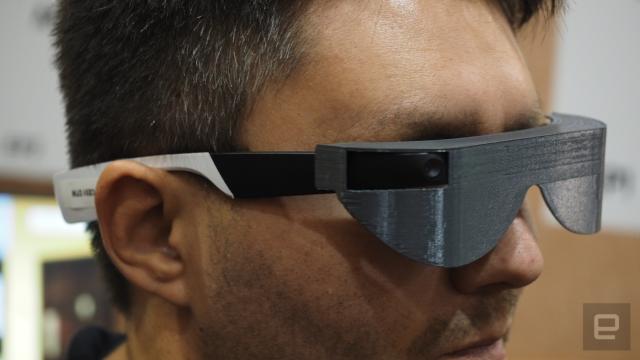Empowering Independence With Assistive Technology for the Blind
The assimilation of assistive modern technology for people that are blind or visually damaged stands for a significant advancement in promoting independence and enhancing top quality of life. With a variety of devices-- from screen viewers to innovative responsive devices-- these technologies not just assist in navigation and interaction but likewise advertise social inclusion and participation in numerous elements of life.
Recognizing Assistive Technology
Although assistive innovation has actually evolved significantly over the years, its basic purpose stays the exact same: to boost the top quality of life for individuals with impairments, especially those that are blind or visually damaged. This modern technology incorporates a wide series of tools and gadgets that assist in freedom and capability in day-to-day tasks.
Assistive modern technology can be classified right into low-tech and sophisticated remedies, each created to meet certain demands. Modern tools commonly include software applications, specialized hardware, and flexible gadgets that make use of advanced modern technology to give support in various contexts. On the other hand, low-tech solutions might entail daily things that are customized to improve ease of access, such as magnifiers or responsive pens.
The combination of assistive technology into the lives of people who are blind or aesthetically harmed not only advertises autonomy but likewise fosters social incorporation and participation in educational and professional environments. By leveraging these innovations, users can browse their environments, accessibility information, and communicate effectively, thus boosting their total high quality of life. Understanding assistive innovation is vital for experts, caregivers, and advocates that intend to sustain individuals in maximizing their prospective and achieving better independence.
Kinds of Assistive Tools
Assistive devices for the aesthetically damaged and blind are crucial tools that boost daily living by addressing particular difficulties run into by individuals. These devices can be broadly classified right into 3 primary types: optical tools, electronic tools, and sensory devices.

Sensory gadgets, such as Braille displays and tactile maps, give different methods to get information. Braille displays convert electronic text into Braille, allowing users to read with touch. Tactile maps use spatial understanding via elevated lines and appearances, permitting for far better environmental awareness.
Together, these assistive tools equip people with aesthetic impairments to engage more totally with their surroundings, promoting greater freedom and self-confidence in everyday activities.

Effect on Daily Life
The integration of assistive modern technology into the lives of individuals who are visually impaired or blind dramatically improves their capability to navigate and communicate with the globe around them. Instruments such as display viewers, Braille presents, and mobile applications assist in accessibility to info, allowing customers to involve with digital material, interact effectively, and manage everyday tasks independently.
In addition, technologies like smart glasses and navigating applications supply real-time support in unfamiliar environments, boosting mobility and confidence. These devices enable customers to determine barriers, checked out signs, and even acknowledge faces, thus promoting a feeling of autonomy in public rooms. Additionally, home automation systems, which can be managed via voice commands, allow individuals to handle their living environments better, improving comfort and security.
The influence of assistive technology prolongs beyond sensible tasks; it promotes social inclusion and psychological well-being. By connecting the space between people and their surroundings, these modern technologies empower customers to get involved fully in neighborhood activities, pursue instructional possibilities, and engage in purposeful partnerships. Inevitably, the improvement of assistive innovation is important in redefining the possibilities for people who are blind or aesthetically damaged, bring about a more comprehensive and available culture.
Success Stories and Endorsements

Another effective testimonial originates from Mark, a recent university grad who used display additional info reading software program throughout his academic trip. This modern technology enabled him to access program products and take part in discussions, eventually bring about his successful shift right into the labor force. Mark credit histories assistive technology for equipping him to accomplish his job objectives, emphasizing its duty in leveling the playing area for people with aesthetic disabilities.
Additionally, area facilities have reported raised involvement in their programs thanks to the introduction of obtainable electronic systems. These systems have made it much easier for people to link, share sources, and assistance each other. These success tales collectively underscore the extensive result of assistive modern technology in promoting self-reliance, enhancing lifestyle, and breaking down obstacles for the blind and aesthetically impaired neighborhood.
Future Trends in Assistive Technology
Emerging modern technologies are positioned to reinvent the landscape of assistive technology for people that are aesthetically damaged or blind. Innovations in fabricated knowledge (AI) and maker knowing are enhancing the capacities of tools, enabling more intuitive user experiences. AI-driven applications are progressively able to identify things and check out text out loud in real-time, supplying customers with beneficial information regarding their environments.
Additionally, advancements in wearable technology are producing new possibilities for self-reliance. Smart glasses furnished with augmented reality features can overlay important info onto the individual's visual field, assisting in navigating and communication with the environment. The assimilation of Internet of Points (IoT) devices is enhancing ease of access in clever homes, allowing customers to manage appliances and obtain notices through voice commands or tactile user interfaces.
The advancement this post of braille display screens and responsive comments systems is also on the increase, advertising access to digital doctor who treats eyes material and boosting communication. As these innovations remain to progress, they assure to enhance daily living, academic opportunities, and employment leads for people with aesthetic problems. Continuous cooperation between engineers, individuals, and advocacy groups will certainly be crucial in making certain these technologies meet the requirements of the neighborhood efficiently.
Final Thought
To conclude, assistive innovation plays a critical duty in boosting the independence of individuals that are blind or visually impaired. By offering vital tools and resources, these innovations help with improved communication, gain access to, and navigating to information, consequently cultivating autonomy and self-confidence. The transformative effect of assistive gadgets not just promotes reliable communication with the environment yet additionally encourages social addition and engagement in various elements of life, ultimately encouraging individuals to prosper within their neighborhoods.
The integration of assistive innovation for individuals that are visually impaired or blind represents a considerable innovation in fostering independence and boosting high quality of life.The combination of assistive innovation into the lives of individuals that are blind or visually hindered not only advertises autonomy but likewise fosters social addition and involvement in specialist and educational atmospheres. Eventually, the development of assistive innovation is crucial in redefining the opportunities for individuals that are visually damaged or blind, leading to a much more available and inclusive culture.
Several individuals who are visually impaired or blind have actually shared inspiring success tales that highlight the transformative impact of assistive modern technology on their lives.In verdict, assistive technology plays a crucial role in boosting the freedom of people who are aesthetically damaged or blind.